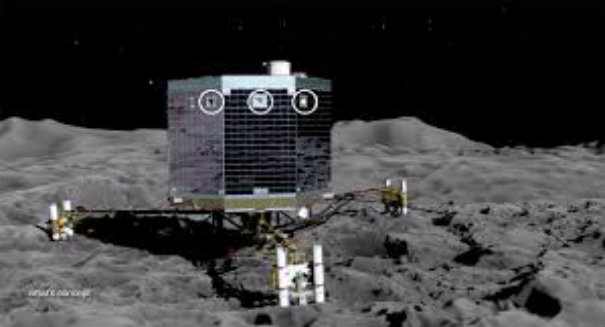Complex molecules present on surface of Comet 67P: Research
“Taken together, these first measurements performed at the surface of 67P profoundly modify our view of comets”, scientists write in a special issue of the journal Science. Four of them, including acetone, had not been previously detected on a comet. Philae lander was dropped on the surface of comet 67P/Churyumov-Gerasimenko in November by the European Space Agency’s Rosetta spacecraft.
That could be significant, the ESA notes, because formaldehyde can form sugars such as ribose, which in turn can form part of ribonucleic acid, an essential part of creating life. The Rosetta probe has found frozen compounds that could be the key building blocks of life.
Still the outer surface is pretty diverse and these new images show many different carbon-containing organic molecules.
“The existence of such complex molecules in a comet, a relic of the early Solar System, imply that chemical processes at work during that time could have played a key role in fostering the formation of prebiotic material”, the ESA report stated.
This fact was because the probe had come to rest near a cliff face that partly shielded it from the sun, preventing its solar panels from recharging its battery.
The lead scientist, Jean-Pierre Bibring, noted the discovery of large dark grains that they believe to be made up of complex light-absorbing organic molecules. But, the historic touchdown couldn’t go exactly as planned as its anchoring harpoons failed to fire, and the 220-pound lander bounced off the comet’s surface.
The space probe woke up from hibernation last month, but the German space agency DLR has not yet been able to establish a robust connection to restart the scientific experiments.
According to CNN, lander system engineer Laurence O’Rourke talked about the new discovery and said, “If you apply energy to such organic compounds… like a comet hitting a planet…it could lead to the creation of amino acids which make up proteins, which are the basis of life itself”.
“We have definitely learned at least one thing with this first comet landing: bouncing is a bigger problem than a possible sinking into the ground”, said Philae project manager Stephan Ulamec.








